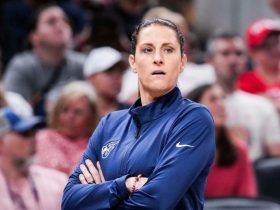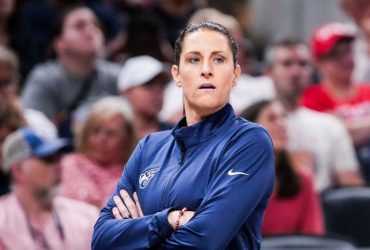MIRAMAR BEACH, Fla. — Let’s not look past the obvious and wade into the ridiculous.
They’re football coaches, OK? Their job is to win games, and everything should be seen through that lens.
Even paradigm change in the sport.
So while just about everyone else associated with college football trudges through the weeds of drastic change, SEC football coaches are talking roster management at the league’s annual spring meetings. That’s right, bubba.
It’s roster size and roster management, right down to the third-team long snapper.
“If I lose two long snappers, where do I get my third one?” said Texas A&M coach Mike Elko.
And if you can’t believe a coach in the biggest, baddest conference in all of college football would say such a tone-deaf thing when the world is crashing down on 70 percent of the sport, that’s just the beginning.
“The biggest problem from our perspective is we don’t have access to a revolving roster (like the NFL) during the season,” Elko said. “The fear we have is if you get a rash of injuries, there’s no avenue to fix it.”
On a 105-man roster.
It is here where we pause, ever so briefly, to soak in the absurdity of that statement — and underscore just how detached coaches are. Again, it’s not their fault; they’re paid to win games.
They’re not paid to fix the College Football Playoff format, or negotiate terms on a pooled media rights revenue concept, or figure out billions in back pay to former players, or have any impact on the SEC playing eight or nine conference games.
They’re given football parameters, and told to win football games within those parameters — or you’re out. It’s about as simple and cutthroat as it gets.
So while college football careens closer and closer to an NFL model, coaches are left wondering why the sport’s leaders refuse to embrace the benefits of a professional structure. Why there are not one, but two free player movement transfer portals.
One access to free movement and an uncapped salary pool (because that’s what it will be with private NIL deals) is bad enough. Two bites at the apple for players, coaches say, is devastating for development.
On a 105-man roster.
“It’s really hard to be playing in a championship setting and have to deal with that,” said Georgia coach Kirby Smart.
Ladies and gentlemen, the biggest, baddest coach in all of college football really said that.
“But when I brought that up as a complaint or a problem,” Smart continued, “It was told to me there’s no crying from the yacht.”
And he was dead serious.
Smart has everything he could possibly want at his alma mater, and every possible advantage to winning. It also helps that he’s the best coach in the business, and Georgia will do anything to keep him happy.
Smart once flew in a helicopter to a high school football game of a recruit, and landed right next to the field before the game began. He and his staff recruit better than anyone in the sport, and he annually has the most talented roster in the nation.
On the other side of the grind, where reality resides, SMU chose to forgo millions in media rights payments from the ACC just to get in the door of power conference football — after paying a what was essentially a $200 million initiation fee by forgoing media rights payments for nine years.
The same SMU that somehow, some way, trudged through the hardships of building a team and earned a spot in the College Football Playoff.
In its first season of big boy football.
I mean, imagine if SMU had lost two long snappers along the way. The horror.
To be fair to these multimillion dollar SEC coaches, they’re creatures of habit. When a plan works, they stick with it.
Who among us could’ve not only seen change, but a completely sidetracked system evolving into an unthinkable abyss?
“We saw where this was going when NIL began,” Elko said, because of course they did. “I don’t think any of it is a surprise to us, once that can got opened.”
So now they’re asking for a single transfer portal window, one that doesn’t affect roster building. Which is sort of like asking for peace in the Middle East.
There are pitfalls for both the winter and spring portals. Place the portal window in the winter, after the regular season, and everyone is dealing roster management during the postseason.
Place the portal window in the spring, and everyone is dealing with a changed roster after three months of preparation and practice for the upcoming season. Teams would then spend a majority of the summer reorganizing a roster, and in some cases, completely changing the face of a team.
Then there’s another teeny weeny problem: If you think player tampering is out of control now, imagine what it looks like in a spring-only portal.
“If there were a (portal) sometime between the end of the last game of the season, and the start of spring ball, that would be ideal,” said Texas coach Steve Sarkisian. “But I don’t think there are a lot of presidents lining up to shift the start of the spring semester for the College Football Playoff.”
You never know. It is the SEC, after all.
Where long snappers mean everything.
Matt Hayes is the senior national college football writer for USA TODAY Sports Network. Follow him on X at @MattHayesCFB.












